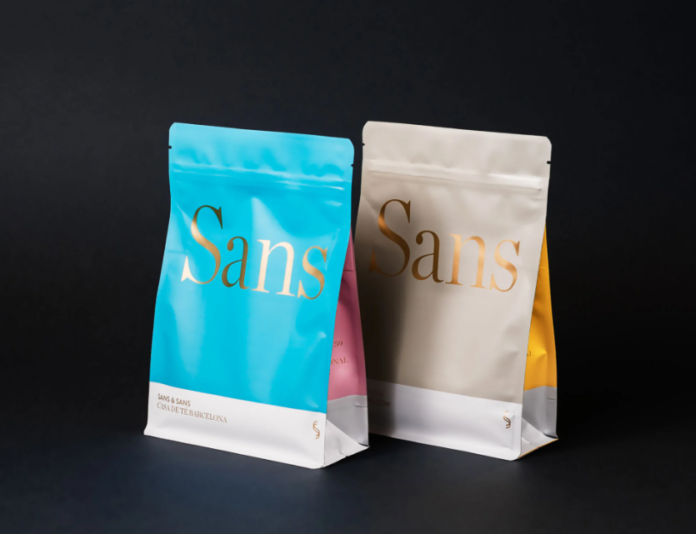When it comes to long-term food storage, Mylar bags are a popular choice for their durability, light-blocking properties, and oxygen barrier. However, with various thicknesses available, it can be challenging to determine which one is best suited for your needs.Â
In this guide, we’ll explore the factors to consider when choosing the right Mylar bag thickness for your storage requirements.
Understanding Mylar Bag Thicknesses
Custom Mylar bags come in different thicknesses, typically measured in mils (one mil equals 0.001 inches). Common thicknesses include:
- 3.5 mil: Lightweight and suitable for short-term storage
- 4.3 mil: A good balance between durability and cost
- 5 mil: Thicker and more puncture-resistant
- 7 mil: Heavy-duty and ideal for long-term storage
Recommended Mylar Bag Thicknesses for Common Food Items
- Grains, beans, and rice: 3.5 mil or 4.3 mil
- Flour, sugar, and salt: 4.3 mil or 5 mil
- Pasta, dehydrated vegetables, and bulky items: 5 mil or 7 mil
- Coffee, tea, and spices: 4.3 mil or 5 mil
- Long-term storage (5+ years): 7 mil
Factors to Consider When Choosing Mylar Bag Thickness
Storage Duration
The intended storage duration is a crucial factor in determining the appropriate Mylar bag thickness. If you plan to store items for a short period (up to 6 months), a 3.5 mil or 4.3 mil bag may suffice. However, for long-term storage (several years), opt for thicker bags like 5 mil or 7 mil to ensure better protection against moisture, oxygen, and punctures.
Type of Food
The type of food you intend to store also influences the thickness of the Mylar bag. Dry goods such as grains, beans, and rice can be stored in 3.5 mil or 4.3 mil bags, while sharp or bulky items like pasta or dehydrated vegetables may require thicker bags (5 mil or 7 mil) to prevent punctures.
Storage Environment
Consider the environment where you’ll be storing your Mylar bags. If the storage area is prone to temperature fluctuations, humidity, or potential pests, choose a thicker bag (5 mils or 7 mils) for added protection. Thicker bags are more resistant to punctures and provide a better barrier against moisture and pests.
Budget
Mylar bags with greater thickness tend to be more expensive. If budget is a concern, you may opt for thinner bags (3.5 mils or 4.3 mils) for shorter storage durations or less sensitive items. However, investing in thicker bags can be more cost-effective in the long run, as they offer better protection and potentially reduce food waste due to spoilage.
Packaging Method
The packaging method you use can also influence the thickness of the Mylar bag. If you plan to vacuum seal your bags, thinner options (3.5 mils or 4.3 mils) may be sufficient as the vacuum sealing process removes excess air and provides an additional layer of protection. However, if you are using oxygen absorbers without vacuum sealing, thicker bags (5 mils or 7 mils) are recommended to prevent punctures and ensure a tight seal.
Tips for Storing Food in Mylar Bags
All right, you’ve got your MYLAR bags – now let’s make them work for you. Follow these steps :
- Labeling: Always label your bags before filling them. Include the contents, packaging date, and preparation instructions.
- Filling: Avoid overfilling – leave enough space at the top for easy sealing.
- Preservation:Use an oxygen absorber to prolong freshness. Remember to open the absorber packets just before sealing to ensure effectiveness.
- Sealing: A tight seal is crucial. Both impulse and vacuum sealers are effective, ensuring no air can enter.
Storage Tips:
- For extended shelf life, remove excess air with oxygen absorbers before sealing.
- Ensure bags are heat-sealed to create an airtight environment.
- Clearly label each bag with its contents and the date it was packed.
- Store the bags in a cool, dry place, avoiding direct sunlight.
- Regularly check the bags for any damage or signs of spoilage.
By following these guidelines, you can significantly extend the shelf life of your food, ensuring freshness and quality.
That’s it! Your food will be protected for years to come.
Conclusion
Choosing the right Mylar bag thickness is essential for ensuring the optimal preservation of your stored food items. By considering factors such as storage duration, food type, storage environment, budget, and packaging method, you can select the most suitable thickness for your needs.Â
Remember, investing in quality Mylar bags and following proper storage practices will help maximize the shelf life of your food and provide peace of mind in case of emergencies or long-term storage needs.
Partner with Us
Tired of packaging that just doesn’t cut it, leaving your product vulnerable or out of line with regulations? Team up with Custom Packaging Lane and uncover our Mylar bag solutions that will safeguard your items. Plus, snag a free sample to see exactly what you’re getting before you make a decision.
Do you have specific needs? Let’s talk! We’re here to tailor everything to your precise specifications.
Read More: 12 Creative Handmade Soap Packaging Ideas



